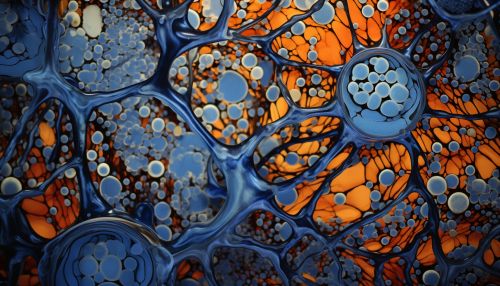The Science of Human Neuroendocrinology
Introduction
Human neuroendocrinology is a scientific discipline that studies the intricate interactions between the nervous and endocrine systems. This field of study is crucial in understanding how these two systems collaborate to regulate a myriad of physiological processes in the human body.


The Nervous System and Endocrine System
The nervous system is a complex network of nerves and cells, known as neurons, that transmit signals between different parts of the body. It is divided into the central nervous system, which includes the brain and spinal cord, and the peripheral nervous system, which consists of all other neural elements. The nervous system is responsible for coordinating voluntary and involuntary actions and transmitting signals between different parts of the body.
In contrast, the endocrine system is a collection of glands that produce hormones to regulate various body functions such as metabolism, growth and development, tissue function, sexual function, reproduction, sleep, and mood. The major glands of the endocrine system include the pituitary gland, thyroid gland, parathyroid glands, adrenal glands, pancreas, ovaries, and testicles.


Neuroendocrine Interactions
Neuroendocrine interactions refer to the complex interplay between the nervous and endocrine systems. The term "neuroendocrine" was coined to denote the close relationship and interdependence between these two systems. The nervous system and endocrine system communicate with each other to coordinate and integrate body functions.
One of the primary ways the nervous system and endocrine system interact is through the hypothalamic-pituitary axis (HPA). The hypothalamus, a region of the brain, receives information about the body's internal environment and responds by producing releasing and inhibiting hormones. These hormones travel to the pituitary gland, where they stimulate or inhibit the release of other hormones into the bloodstream.


Neuroendocrine Cells
Neuroendocrine cells are specialized cells that receive neuronal input and, as a consequence of this input, release hormones into the blood. These cells are found throughout the body, particularly in the gastrointestinal tract and pancreas, but also in the respiratory and reproductive tracts. Neuroendocrine cells play a crucial role in maintaining homeostasis by responding to changes in the body's environment and releasing appropriate hormones.


Neuroendocrine Disorders
Neuroendocrine disorders are diseases that affect the interaction between the nervous and endocrine systems. These disorders can result from abnormalities in the neuroendocrine cells or from problems in the communication between the nervous and endocrine systems. Some common neuroendocrine disorders include Cushing's syndrome, Addison's disease, and neuroendocrine tumors.


Conclusion
Understanding the science of human neuroendocrinology is essential for comprehending the complex interactions between the nervous and endocrine systems. This knowledge is crucial for diagnosing and treating a wide range of disorders that can result from disruptions in these systems.
